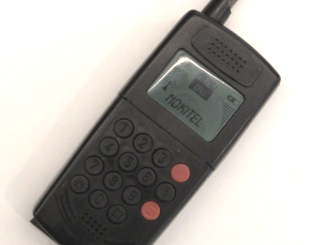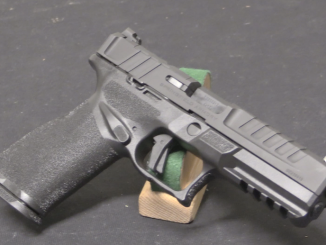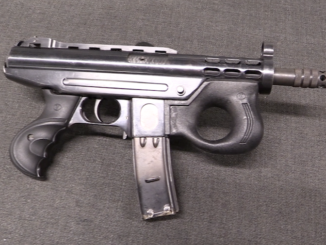The VHS-1 was heavily influenced by the French FAMAS, albeit with a short stroke gas piston operating system. Early development began in the late 1990s with the prototype designs we looked in over the past few weeks, and the VHS-1 itself really emerged between 2003 and 2005. It was formally announced in 2005, and after formal testing by the Croatian military it was adopted, and the first military deliveries arrived in 2007.
In addition, the VHS-1 was exported to Kurdistan and the Iraqi Army. Two versions were made, the D1 with a long barrel and the K1 with a short barrel, and the upper assembly could be had with either iron sights (much like the FAMAS iron sights) or an integrated optic similar to the G36 and Steyr AUG. In total about 20,000 were manufactured, including a run of 40 made as civilian semiautomatic-only rifles for the Hungarian sporting market.
Lessons learned in the fielding of the VHS-1 would be used to further refine the design and lead to the VHS-2, aka Springfield Hellion.




Sorry, but I have to say it up loud: WHY have Croatians gone thru such a struggle to create the world’s best bull-pop? They could have created a standard rifle at one sweep at less effort and less expense. It beats me.
If you look in comparison what Zastava did recently you find it is not only very capable, but also considerably simpler. Anyway, my respect goes to VHS produkt efforts.
The fact Ian gives attention to such a “minor use” rifle is admirable.
not to start a pro&contra bullpup discussion, but the significantly longer barrel makes sense when your opponents wear body armour.
I remain dubious of the proposition that the bullpup format is suitable for actual combat use by people who engage in actual gunfights with their rifles.
Paramilitary use? Where the users are quasi-law enforcement types not engaging heavily armed peers? Bullpup configuration might be somewhat more acceptable.
Raw fact is, though, that much like heel-release magazines and stripper-fed magazines on handguns, nobody that does actual extensive combat use will accept either of those features willingly. It’s the ergonomics; a bullpup requires too many compromises, too much attention from the rifleman. The costs in situational awareness are just too high.
When holding a rifle of conventional layout in ready position, user sees in his peripheral vision the front of it which aids to target acquisition. Bull-pop lacks this benefit.
I think the heel-of-butt magazine catch on pistols came about because it was easier and cheaper to machine than a 1911-type catch.
Also, European military and police officers didn’t anticipate firing more than one or two rounds. And the object of a magazine change was usually to set up for the next five-shot string on the firing range.
The drill was release the magazine, pull it out slowly, lay it on the bench, shove the next one slowly but firmly in until you heard it click. “Safety First”, and a very leisurely method. Nothing like the rapid reloads needed in an actual gunfight.
Design features optimized for practice can be problematic in an IA.
cheers
eon
Do the windage and elevation adjustments move the complete scope?
this looks like a very elegant solution. Why isn’t it done more often? Internal windage adjustments need very precise mechanics, and shift lenses out of the ideal position.
easier to get in and out of a BMP maybe, why didnt they just use the AK they had already?
French Resistance Enfields for sale
https://www.ows-ammo.com/enfield-4-s
https://www.ows-ammo.com/enfield-4-s
Enjoy!!
Eric.